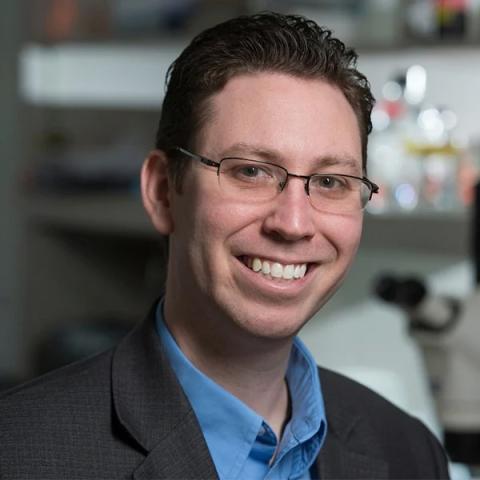Research Overview
Overview: Targeted nanotechnology for the pancreatic and ovarian tumor immune microenvironment
Cancer can rarely be eradicated with single-agent therapy. More information than is capable of being carried by one small molecule is often required. We can synthesize nanomedicines engineered to perform multiple tasks in sequence, leveraging the tumor milieu for initiation of these tasks. Such reagents have been referred to as nanodrones. For instance, we now have the ability to design technology meaningful for management of pancreatic ductal adenocarcinoma (PDAC), one of the most insidious and highly lethal malignancies. Even if detected and removed at early stages, the five-year survival rate for this disease remains low, and below that of most other cancers. The tumor microenvironment (TME) of PDAC is unusually complex. The pancreas develops cancer in pathologically definable stages, in analogy to prostate cancer, i.e., PanIn progressing to PDAC. There is also a variety of phenotypes associated with PDAC, which can be primarily cystic, mucinous, or can be fenced in behind a desmoplastic stroma. Accordingly, therapeutic agents – generally in combination – must carry sufficient information to negotiate the barriers and heterogeneity of this disease. We have chosen to focus on targeted nanomedicines based on platforms that we have previously tested and leveraged for other malignancies. The goal will be to reprogram PDAC cells and the related immune microenvironment to enhance tumor eradication in situ, through intravenous administration of therapeutic mesoporous silica nanoparticles (MSN), or those with a poly(beta-amino ester) (PBAE) backbone. We will complement these therapies with imaging merely by switching out the therapeutic gene with one for imaging in the case of the PBAE nanoparticles. As we refine these platform technologies we will also be poised to pivot to other lethal cancers, such as ovarian, breast and melanoma, in both their localized and metastatic states.
Aim 1: To synthesize, optimize, characterize and test in vitro (organoids) and in vivo (KPC genetically engineered mouse models, GEMM) MSN nanoparticles suitably surface functionalized to target PDAC.
Aim 2: To develop a PBAE nanoparticle carrying a molecular-genetic platform for simultaneous expression of an immunostimulatory cytokine (e.g., IL-12) or imaging reporter (e.g., firefly luciferase or PSMA) and a co-stimulatory molecule (4-1BBL) without and with an incorporated enhanced cancer-selective promoter, the latter to add an additional level of targeting specificity.
Aim 3: To leverage an anti-fibrotic agent, TLY012 we have developed to maximize access of the plasmid-bearing, engineered nanoparticle of Aims 1 and 2 to treat PDAC in relevant models in vivo.
Aim 4: To extend these molecular-genetic platforms to other lethal cancers, with an initial focus on ovarian cancer. Notably the progression of ovarian cancer parallels increased associated fibrosis.
Collaborating Projects
- Collaborating Project #1: New Tools to Address Chronic Disease
- Collaborating Project #6: Tumor Microenvironment Crosstalk Drives Early Lesions in Pancreatic Cancer
- Collaborating Project #8: Optimizing Systemic Immunotherapy for Personalized Brain Metastasis Treatment
- Collaborating Project #10: Small Molecule PSMA-Targeted Alpha Therapy
Service Projects
- Service Project #1: The PET Radiotracer Translation and Resource Center (PET-RTRC)
- Service Project #5: Arginine metabolism regulates myeloid immune suppression in glioblastoma
- Service Project #7: Imaging acidosis and immune therapy in PDAC
- Service Project #8: Cell Manipulation Tools

Martin Pomper, M.D., Ph.D.
Professor and Chair of Radiology, Effie and Wofford Cain Distinguished Chair in Diagnostic Imaging
UT

Jordan J. Green, PhD
Professor of Biomedical Engineering, Ophthalmology, Oncology, Neurosurgery, Materials Science & Engineering, and Chemical & Biomolecular Engineering
Vice Chair for Research and Translation, Department of Biomedical Engineering
Associate Director, Center for Translational Immunoen
Johns Hopkins School of Medicine
Recent Publications
Non-Viral Gene Delivery to Hepatocellular Carcinoma via Intra-Arterial Injection
Vaughan HJ et al. Int J Nanomedicine. 2023
Polymeric Nanoparticles for Dual-Targeted Theranostic Gene Delivery to Hepatocellular Carcinoma
Vaughan HJ et al. Sci Adv. 2022
Polymeric Nanoparticles as Cancer-Specific DNA Delivery Vectors to Human Hepatocellular Carcinoma
Zamboni CG et al. J Control Release. 2017
Noninvasive Targeted Transcranial Neuromodulation via Focused Ultrasound Gated Drug Release from Nanoemulsions
Airan RD et al. Nano Lett. 2017